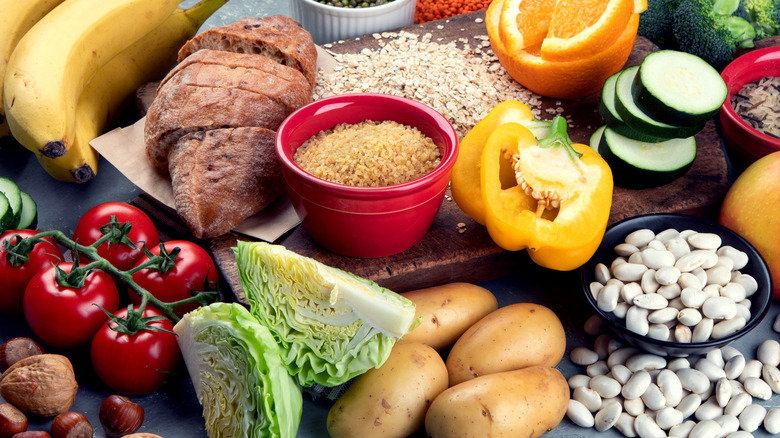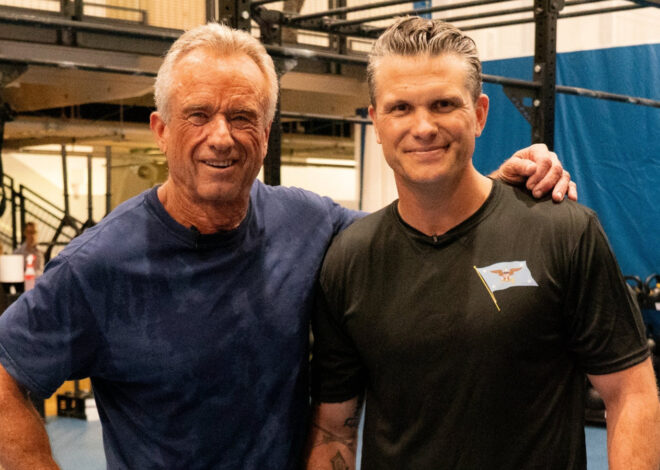
Science Says These Are The Healthiest Carbs You Can Eat If You Have High Blood Pressure – Health Digest
A new diet fad appears every few months and goes viral on TikTok until another one takes its place. Many of these fads will have you eliminating something from your diet while favoring another class of foods. These days, carbs are the “enemy” and people are promoting high-fat foods.
However, if you have high blood pressure, you don’t have to sacrifice your carbs at all. According to a 2021 study in Hypertension, it’s best to keep your carbohydrates to 50% to 55% of your daily calories, making sure that those carbs are healthy sources of carbs rather than refined carbs. You’re more likely to develop high blood pressure if you don’t eat enough high-quality carbs or you eat too many refined or processed carbs that are high in sugar, according to a 2019 review in Current Nutrition Reports. Fruits, vegetables, and whole grains can temporarily lower blood pressure and lower your risk of hypertension, but foods and drinks with added sugar are linked to an increased risk of high blood pressure.
Why does the quality of your carbs make a big difference? High-quality carbohydrates generally contain more fiber and less sugar. Fiber helps to support healthy gut bacteria, which produce short-chain fatty acids that help reduce blood pressure. High-quality carbs are also lower on the glycemic index. “The current hypothesis is that low glycemic index foods lower blood sugar, thereby reducing insulin and leptin levels, which leads to lower blood pressure,” Registered Dietitian Angel Luk told Health Digest.
High-fiber carbs are best for high blood pressure
If you have high blood pressure, a high-fiber diet can reduce your systolic blood pressure by almost 6 millimeters of mercury and your diastolic by 4 millimeters of mercury, according to a 2005 meta-analysis in the Journal of Hypertension that reviewed the results of 25 randomized controlled trials. How much fiber is best? A 2024 review in Hypertension suggests consuming at least 28 grams of fiber a day for women and 38 grams a day for men. Each additional 5 grams of fiber can reduce systolic blood pressure by 2.8 millimeters of mercury and diastolic by 2.1 millimeters of mercury (by the way, here’s the best diet for hypertension).
High-quality whole grains like oats and barley are good sources of fiber with less than a gram of sugar. A cup of oatmeal has 4 grams of fiber, and pearled barley has 6. To sweeten your oatmeal or barley, add a banana. That banana adds another 3 grams of fiber and 422 milligrams of potassium. Potassium helps to relax your blood vessels and reduce your blood pressure.
Another high-quality class of carbohydrates is beans. Beans are high in fiber and potassium. A cup of cooked black beans will fill you with 15 grams of fiber while putting you at 13% of your recommended potassium needs. Black beans might taste dull on their own, so add a cup of cooked tomatoes for flavor and an additional 523 milligrams of potassium (11% of your daily value).
Make sure to keep your sodium intake low too
In addition to making sure your carbs are high quality, you also want to keep an eye on your sodium intake. If you’ve been diagnosed with high blood pressure, it’s suggested that you limit your sodium to 1,500 milligrams a day (per American Heart Association). That means putting away the salt shaker since a teaspoon of salt has 2,300 milligrams of sodium. Sodium sneaks its way into many foods, so check your nutrition labels. “An easy way to [keep sodium low] is to aim for 5% or less of the daily value for sodium, as this indicates that the serving size for the product is considered low in that nutrient,” Luk said.
A cup of canned black beans has 922 milligrams of sodium, and a cup of canned tomatoes has 450 milligrams. Together, they bring you close to your daily sodium limit in just one meal. To reduce sodium, buy dried beans and cook them on your own. Whole tomatoes have a trace amount of sodium.





